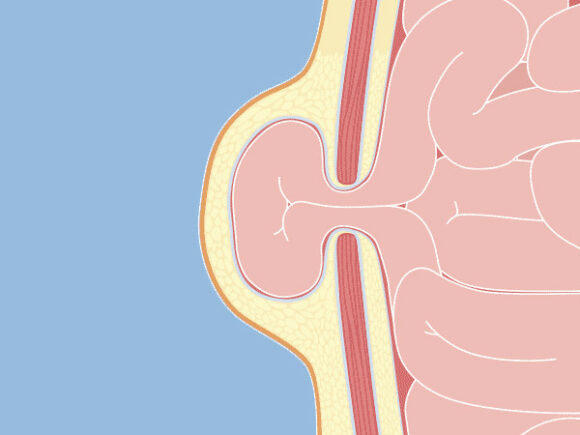Umbilical Hernias and epigastric hernias
Umbilical hernias and epigastric hernias are the second most common hernia diseases. They are diagnosed and treated by ZweiChirurgen at our “Competence centre for hernia surgery” in Switzerland (Basel, Zurich, Liestal).
Men and women have a lifetime risk of about 10% of developing such hernias. Surgery is necessary if the hernia has reached a certain size or is causing discomfort. Small hernias (< 1 cm hernia orifice diameter) can be managed with a direct suture closure. According to current guidelines reflecting most recent studies, hernias (> 1 cm) should be treated with a defect closure and a supporting mesh, e.g. at the umbilicus in the “Per Umbilical Mesh Plasty”, so-called PUMP operation. The mesh is ideally inserted between the abdominal wall and the peritoneum (extraperitoneal mesh position). Using meshes in such cases significantly reduces the risk of recurrence after the operation.
Open surgical procedures
- Retromuscular mesh repair (Rives-Stoppa operation)
- Per-Umbilical-Mesh-Plasty (PUMP repair)
- Direct suture closure
Minimally-invasive procedures
- Mesh implantation via laparoscopy between the peritoneum and abdominal wall muscles (TAPP, eTEP)
- MILOS procedure (Minimal or Less Open Surgery): less invasive procedure for the treatment of umbilical and incisional hernias with a small incision, mesh position retromuscular
- SCOLA (Subcutaneous Onlay Laparoscopic Approach)
Hospital stay: 2 days
Umbilical hernias without mesh: outpatient if necessary
